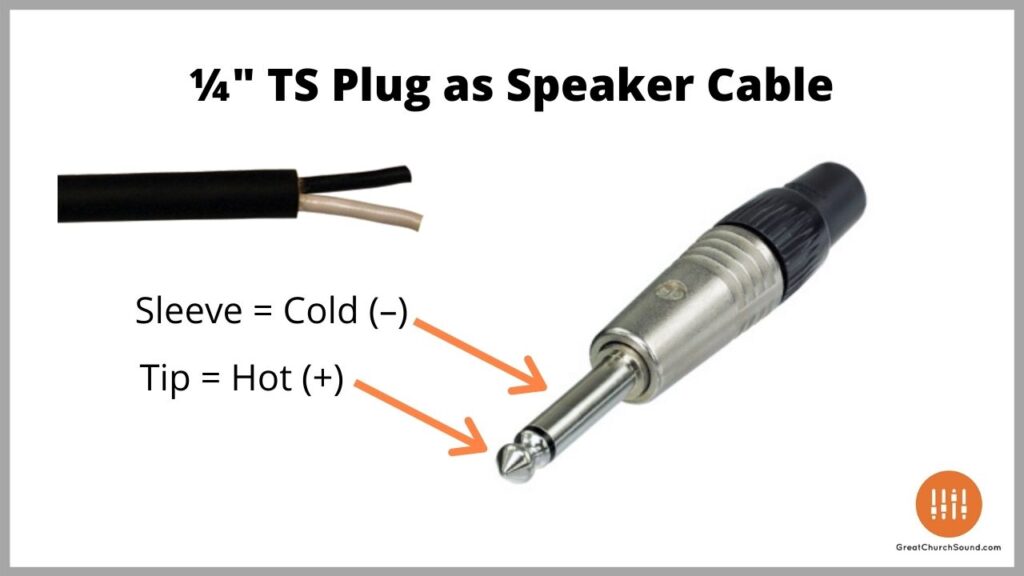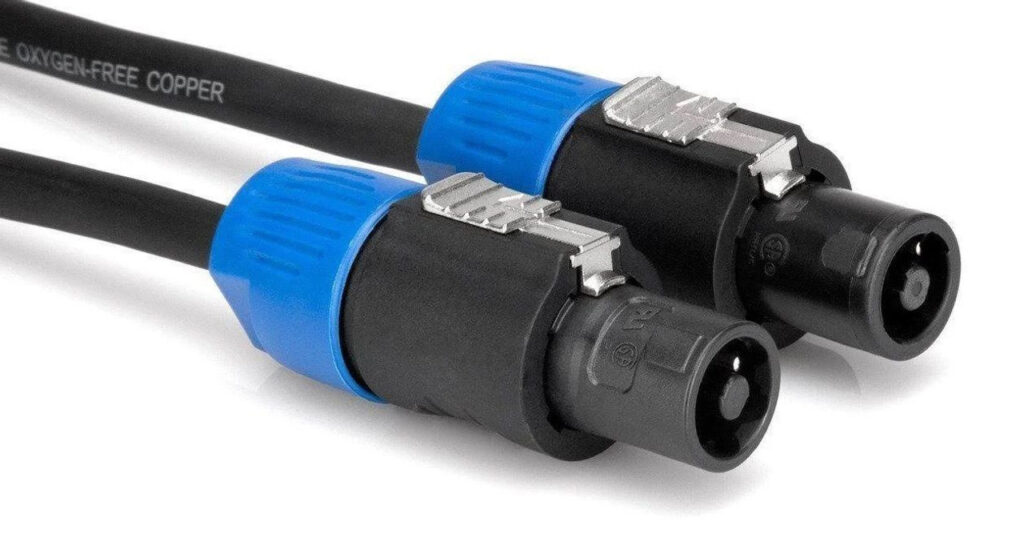Speaker Jack Types – A Comprehensive Guide!
Understanding different speaker jack types is crucial for optimal audio quality and device compatibility. Common types include 3.5mm, 1/4-inch, RCA, Banana Plugs, XLR, and Speakon, each serving specific needs.
When setting up an audio system, whether at home, in a car, or in a professional studio, understanding the different types of speaker jacks is crucial. The type of jack you use affects the sound quality, compatibility with your devices, and overall user experience.
In this article, we’ll explore the various types of speaker jacks, their uses, and how to choose the right one for your needs.
3.5mm Jack (Auxiliary Jack):
The 3.5mm jack, often referred to as an auxiliary (or aux) jack, is one of the most common audio connectors. It’s the small, round plug that you see on headphones, smartphones, and many portable speakers.
Usage:
- Portable Devices: This jack is widely used in portable devices like smartphones, MP3 players, and tablets.
- Car Audio Systems: Many car audio systems have a 3.5mm input, allowing you to connect your phone or other devices to play music through the car’s speakers.
- Home Audio Systems: Some home audio systems include a 3.5mm input for easy connection with various devices.
Advantages:
- Versatility: Compatible with a wide range of devices.
- Portability: Small and easy to carry.
- Affordability: Generally inexpensive and widely available.
Disadvantages:
- Sound Quality: While good for casual listening, it may not provide the best sound quality compared to other connectors.
- Durability: The small size can make it prone to damage, especially with frequent plugging and unplugging.
1/4-Inch Jack (Phone Plug):

The 1/4-inch jack, also known as a phone plug, is a larger version of the 3.5mm jack and is commonly used in professional audio equipment.
Usage:
- Musical Instruments: Commonly found on electric guitars, keyboards, and other instruments.
- Professional Audio Gear: Used in mixers, amplifiers, and studio monitors.
- High-End Headphones: Some high-quality headphones use a 1/4-inch jack for better sound fidelity.
Advantages:
- Durability: Sturdier and more durable than the 3.5mm jack.
- Sound Quality: Offers better sound quality, especially in professional settings.
- Reliability: Less likely to disconnect accidentally.
Disadvantages:
- Size: Bulkier and less portable than the 3.5mm jack.
- Compatibility: Not as widely used in consumer electronics, requiring adapters for some devices.
RCA Connectors:
RCA connectors are commonly used in home audio and video systems. They typically come in pairs or sets of three, with each connector color-coded (red and white for audio, yellow for video).
Usage:
- Home Theaters: Connects components like DVD players, TVs, and audio receivers.
- Older Audio Equipment: Common in older stereos and audio-visual equipment.
- Gaming Consoles: Some older gaming consoles use RCA connectors for audio and video output.
Advantages:
- Widespread Use: Compatible with a variety of audio and video equipment.
- Easy Identification: Color-coded for straightforward connections.
- Decent Sound Quality: Provides good audio quality for most home setups.
Disadvantages:
- Outdated: Being phased out in favor of newer digital connections like HDMI.
- Bulkiness: Requires multiple cables for audio and video, leading to clutter.
Banana Plugs:
Banana plugs are specialized connectors used to connect speakers to amplifiers or receivers. They provide a secure connection and are favored in home audio setups.
Usage:
- Home Audio Systems: Used to connect speakers to amplifiers or receivers.
- High-End Audio Equipment: Common in high-fidelity audio systems where sound quality is paramount.
Advantages:
- Secure Connection: Plugs tightly into the speaker and amplifier terminals, reducing the risk of loose connections.
- Easy to Use: Simple to plug in and unplug, making setup and adjustments hassle-free.
- High-Quality Audio: Provides excellent sound quality with minimal signal loss.
Disadvantages:
- Cost: More expensive than basic wire connections.
- Compatibility: Not all audio equipment supports banana plugs.
Also Read: Why Is My Speaker Crackling – A Complete Guide!
XLR Connectors:
XLR connectors are commonly used in professional audio equipment, known for their durability and ability to carry balanced audio signals, which reduces noise and interference.
Usage:
- Microphones: The standard connector for professional microphones.
- Professional Audio Gear: Used in mixers, amplifiers, and sound systems in studios and live performances.
- High-End Home Audio Systems: Occasionally found in high-end home audio setups for superior sound quality.
Advantages:
- Balanced Audio: Reduces noise and interference, providing clear sound.
- Durability: Built to withstand heavy use in professional settings.
- Secure Connection: Locks in place, ensuring a reliable connection during performances or recordings.
Disadvantages:
- Size and Weight: Larger and heavier than other connectors.
- Cost: More expensive than simpler connectors like 3.5mm jacks.
Speakon Connectors:

Speakon connectors are specialized connectors designed for connecting speakers to amplifiers in professional audio settings. They are known for their durability and secure connections.
Usage:
- Professional Sound Systems: Commonly used in concert venues, studios, and other professional audio setups.
- High-Power Speakers: Ideal for connecting high-power speakers and amplifiers.
Advantages:
- Secure Connection: Locks in place to prevent accidental disconnection.
- High Power Handling: Designed to handle high power levels without signal loss or damage.
- Durability: Built to withstand the rigors of professional use.
Disadvantages:
- Cost: More expensive than standard connectors.
- Compatibility: Limited to professional audio equipment, not typically found in consumer electronics.
Choosing the Right Speaker Jack:
Choosing the right speaker jack depends on your specific needs, the type of equipment you’re using, and the environment where it will be used. Here are a few tips to help you make the right choice:
- Consider Compatibility: Make sure the jack type is compatible with both your speaker and audio source.
- Think About Sound Quality: If sound quality is a priority, opt for connectors like XLR or banana plugs that minimize signal loss and interference.
- Durability: For professional use or settings where equipment will be frequently connected and disconnected, choose durable connectors like Speakon or XLR.
- Ease of Use: For a home setup where you might need to connect and disconnect devices often, 3.5mm or RCA connectors offer ease of use and versatility.
FAQ’s:
1. What is the most common speaker jack?
The 3.5mm jack is the most common, widely used in portable devices like smartphones, MP3 players, and car audio systems for casual listening.
2. Why choose a 1/4-inch jack over a 3.5mm jack?
A 1/4-inch jack offers better durability and sound quality, making it ideal for professional audio equipment and high-end headphones, despite being bulkier.
3. Are RCA connectors still relevant?
RCA connectors are still used in older home audio systems but are gradually being replaced by digital connections like HDMI in modern setups.
4. What are Banana Plugs best for?
Banana plugs are ideal for home audio systems, providing a secure and high-quality connection between speakers and amplifiers with minimal signal loss.
5. What does professional audio favor XLR connectors?
XLR connectors are preferred in professional audio due to their balanced signal, which reduces noise and interference, and their durability for heavy use.
Conclusion:
Choosing the right speaker jack is essential for achieving the best audio performance and ensuring compatibility with your equipment. From the common 3.5mm jack to professional-grade XLR and Speakon connectors, each type offers unique advantages. Understanding your needs—whether for casual listening, home audio, or professional setups—helps in selecting the appropriate connector. Properly matching your speaker jack type with your equipment can enhance sound quality and ensure a seamless audio experience.







